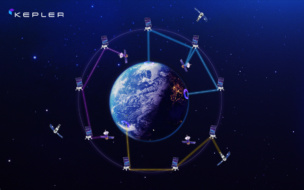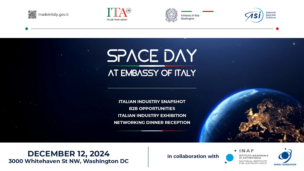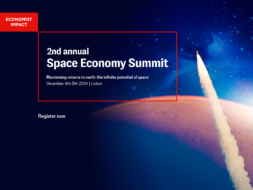From inventing the telephone to now creating the most powerful camera aboard the James Webb Telescope, Scotland continues to revolutionize technology and is setting its sights on the space industry. Home to 5 out of the 7 launch sites in the United Kingdom and multiple university research hubs, Scotland is a prime location for kickstarting the biggest end-to-end space solutions hub.
Already the number one manufacturer of small satellites in Europe – and only second to California in the world – Scotland has high aims for its entire space sector in the coming decade.
The Goals
- Grow the space sector by a market share to $5B
- A sector that supports 20,000 jobs
- Support the highest launch cadence in Europe
- Attract global talent and increase exports and international investment
- All while being a leader in addressing global climate change with a “net zero” approach
To accomplish this, Scotland has outlined three major initiatives:
The Scottish Space Strategy sets a plan for positioning Scotland as a global leader for commercial space developments through the capture of growing markets and in house solutions.
The (first ever) Space Sustainability Roadmap highlights dedication to a greener cause and includes over a dozen industry partners and their contributions.
The Inward Investment Plan identifies space as one of nine key sectors in Scotland’s expanding economy and aims to invest internally in alignment with economic priorities and values.
Combining pointed inward investment with a directed growth strategy puts Scotland in a position of power to lead space solutions in the coming decade. Their emphasis on sustainability also ensures solutions that benefit the entire planet. Taking advantage of existing strengths while finding holes to fill in emerging markets, Scotland takes a multi-arm approach to reaching these goals.
The Approach
- University Talent: Build upon the world class research base of Scotland’s universities to foster innovation and to inspire and deliver the space workforce of the future
- Manufacturing: Strengthen world-class facilities for manufacturing small-sats and take advantage of component standardization
- Launch: Vertically or horizontally launch from multiple coastal regions to cater to wide varieties of payloads and missions
- Data Analytics: Utilize existing expertise in data analytics to synergize research, manufacturing, operations and launch while offering insights from mission data
Bigger than you think: Scotland already has five developing spaceports within its border. These include the SaxaVord Spaceport in Shetland—which recently became the UK’s first licensed vertical spaceport—Sutherland Spaceport, Spaceport Machrihanish in Argyll, Prestwick Spaceport, and Spaceport 1 in the Outer Hebrides, each contributing distinct capabilities to Scotland’s growing space industry.

Satellite image of SaxaVord Spaceport
In its capital, Edinburgh holds a research hub that’s home to the Higgs Center for Innovation and UK Astronomy Technology Center, which was a key player in developing the James Webb Telescope. The University of Edinburgh and Heriot-Watt University large scale data and analytics programs and accompanying start-ups have earned the region the title of ‘space data capital of Europe’.
A greener point of view: Scotland’s data analytics capabilities are already making the world a better place, working on Earth Orbiting (EO) satellites to track elephant migration, classify more than 240 billion trees, and monitor biodiversity loss and gas levels.
Nearby in Glasgow lies the small satellite manufacturing cluster and the Integrated Space and Exploration Technology (I-SET) laboratory at Glasgow University. This blending of research, manufacturing, and market growth highlights how Scotland can really do it all, even within the same city.
After being manufactured at the facilities in Glasgow, satellites will be a go for launch at one of several launch sites. The sprawling coastline and northern latitude make Scotland the ideal place to launch, easily reaching polar and sun synchronous orbits which currently account for 95% of future orbital requirements. We expect to see the first launch from Scotland in 2024.
To fund all these growing sectors, Scotland is taking a “mixed-use” investment strategy incorporating internal, international, and VC funding to gain global recognition.
A Global Hub for Space
The Scottish Inward Investment plan serves as an indicator to the rest of the space industry that Scotland is willing to bet on itself and commit to market growth for the space sector. This attracts global talent to work for Scottish companies and for foreign companies to invest within Scotland for access to the world’s best facilities and space opportunities.
Mangata Networks announced a $100 million financing deal in 2022 to build a manufacturing facility in Scotland for its multi-orbit broadband constellation. This deal includes private investment, grant funding, and government stakes to produce and test 24 satellites up to 1,500 kilograms every three months starting in 2025.
Orbex and Skyrora are two start-up companies aiming to send the first UK rocket out of Scotland with an emphasis on green propellants. Both companies were awarded grants from ESA to develop their launch and manufacturing facilities, and both chose Scotland as their desired location.
Spire Global, selected Scotland as the location for its state-of-the-art manufacturing facility. Situated in Glasgow, Spire’s satellites are designed, assembled, rigorously tested, and operated in-house. Spire builds, owns, and operates a fully deployed satellite constellation that observes the Earth in real time using radio frequency technology. The data provides global weather intelligence, ship, and plane movements, and spoofing and jamming detection to better predict how their patterns impact economies, global security, business operations and the environment.
Attracting business from across the globe and fostering innovation at home, Scotland is quickly taking over all sectors within the industry across the value chain. With manufacturing, launch, operations, and analytics, Scotland really can do it all. To quote Richard Lochhead, the Minister for Small Business, Innovation, Tourism and Trade, “That’s all end to end. That’s the uniqueness of Scotland and that’s why we’re confident that it can be the leading space nation of Europe”.



